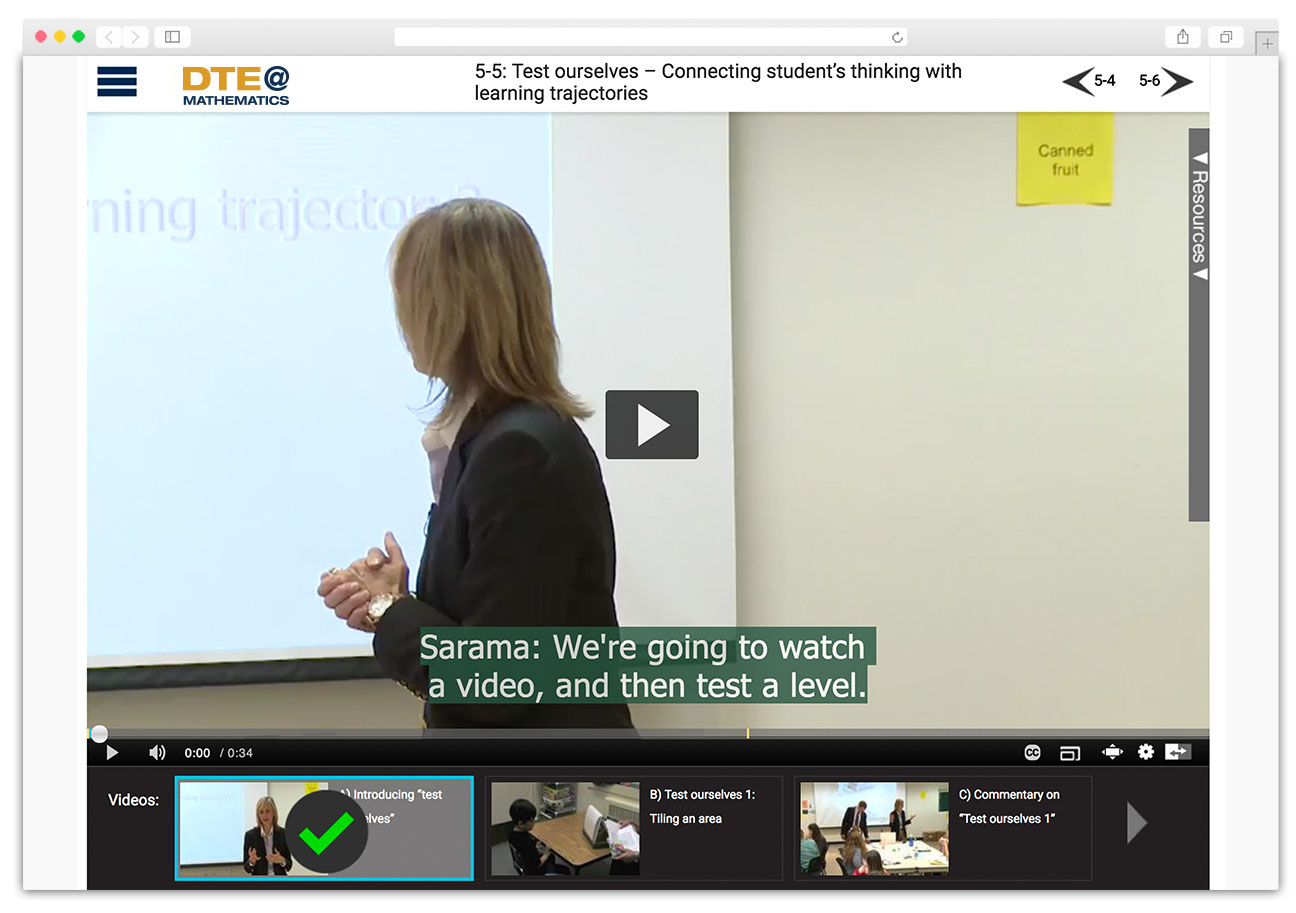Geometric-measurement - Session 5: Area Learning Trajectory – Developmental progression
Part 5: Test ourselves – Connecting student’s thinking with learning trajectories
Overview
This part provides an opportunity to apply what was learned in the previous parts by using the levels of the developmental progression for area to characterize students’ responses to measurement tasks. The work in this part also provides another opportunity to practice taking anecdotal notes about students’ thinking.
Key Points
- To make claims about students’ thinking, it is important to have specific evidence from students’ work. Anecdotal notes provide a way to keep track of this evidence.
- It can be difficult to identify students’ Learning Trajectory levels while observing their work. It can be helpful to record descriptive notes during an observation and then interpreting these notes afterwards to identify their Learning Trajectory levels.
